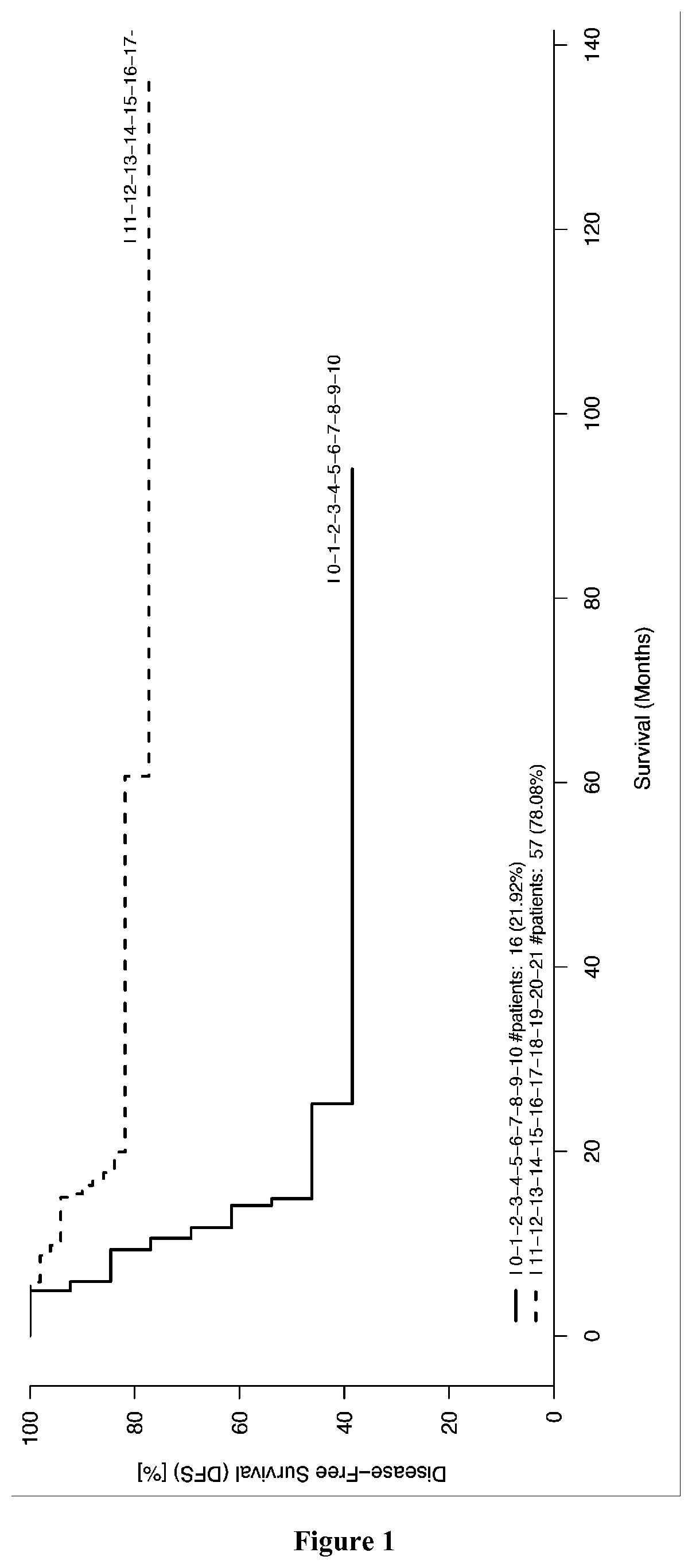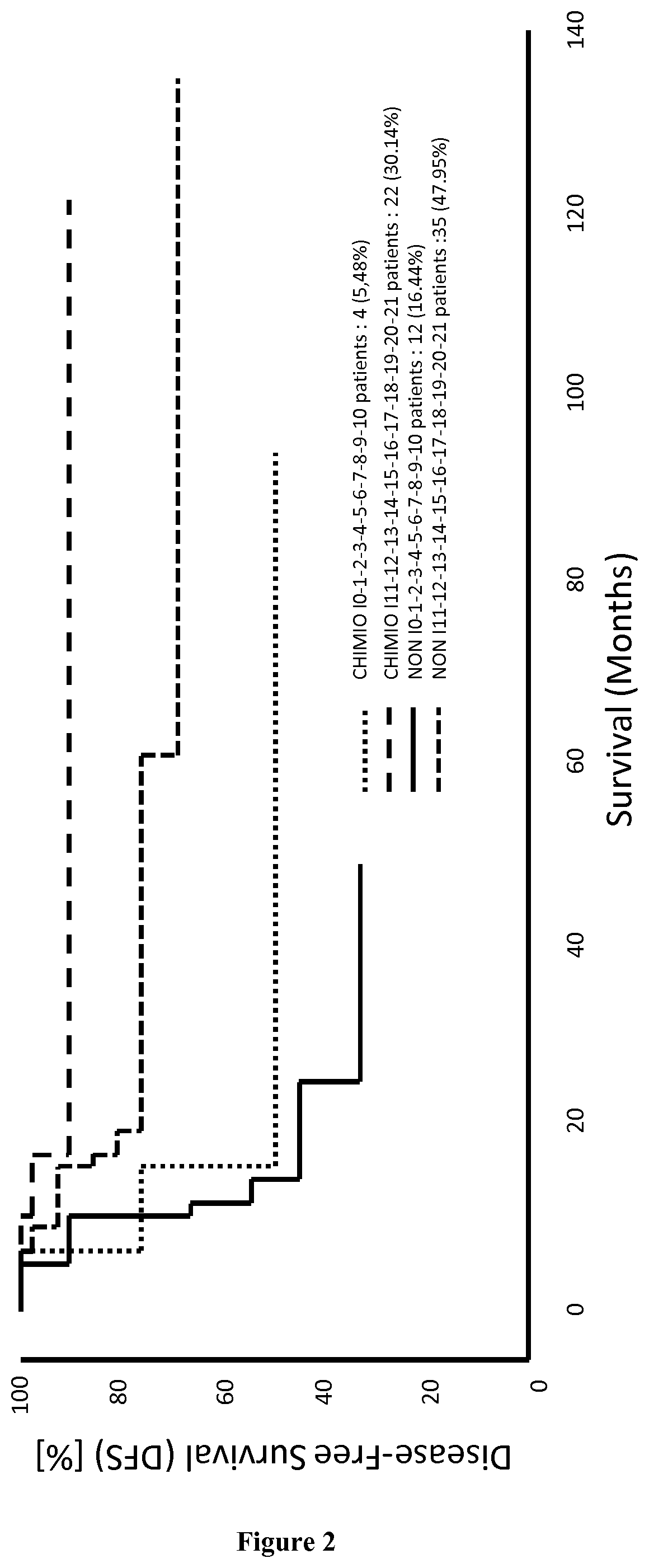Methods for predicting the survival time and treatment responsiveness of a patient suffering from a solid cancer with a signature of at least 7 genes
a solid cancer and gene signature technology, applied in the field of methods and kits for predicting the survival time and responsiveness of a patient suffering from a solid cancer, can solve the problems of no relevant guidelines for prescribing chemotherapy, no reliable prognosis of the outcome of the cancer, and the serious public health problem of cancer
- Summary
- Abstract
- Description
- Claims
- Application Information
AI Technical Summary
Benefits of technology
Problems solved by technology
Method used
Image
Examples
example 1
Material & Methods
[0170]Patients and Database:
[0171]The records of colorectal cancer (CRC) patients who underwent a primary resection of their tumor at the Laennec-HEGP Hospitals between 1996 and 2004 were reviewed and previously described (Galon et al. 2006). Frozen tumor samples available from Laennec-HEGP Hospitals from 1996-2004, with sufficient RNA quality and quantity, were selected (validation cohort 1, n=108). The RNA samples analyzed were from 108 different patients. These patients were used for gene expression experiments (Taqman cohort). The observation time in the cohorts was the interval between diagnosis and last contact (death or last follow-up). Data were censored at the last follow-up for patients without relapse, or death. The min:max values until progression / death or last follow-up were (0:136) months, respectively. Three patients for whom follow-up data were unavailable were excluded from survival analysis. Time to recurrence or disease-free time was defined as t...
example 2
[0177]The signature of 21 genes identified in EXAMPLE 1 was validated for predicting the survival time of patients suffering of breast cancer, cervical cancer, hepatocellular carcinoma, lung cancer, melanoma, ovarian cancer or pancreatic cancer (see for example FIGS. 7, 12, 14 and 16). Minimal signatures of at least 7 genes also were determined (see FIGS. 8, 9, 10, 11, 13, 15, 17, 18 and 19).
example 3
[0178]FIG. 20 illustrates stage IB-IIIV lung cancer patients (NSCLC), where patient with a “Hi” adaptive immune gene signature have prolonged survival and do not need chemotherapy treatment (no benefit from chemotherapy treatment). A significant benefic effect of chemotherapy treatment can be observed in patients with a “Lo” adaptive immune gene signature.
[0179]FIG. 21 illustrates stage ITT / IV ovarian cancer patients, where patient with a “Hi” adaptive immune gene signature have a significant benefic effect of chemotherapy treatment. On the contrary patients with a “Lo” adaptive immune gene signature prolonged survival and do not need chemotherapy treatment (no benefit from chemotherapy treatment).
PUM
| Property | Measurement | Unit |
|---|---|---|
| survival time | aaaaa | aaaaa |
| size | aaaaa | aaaaa |
| Northern blot | aaaaa | aaaaa |
Abstract
Description
Claims
Application Information
 Login to View More
Login to View More - R&D
- Intellectual Property
- Life Sciences
- Materials
- Tech Scout
- Unparalleled Data Quality
- Higher Quality Content
- 60% Fewer Hallucinations
Browse by: Latest US Patents, China's latest patents, Technical Efficacy Thesaurus, Application Domain, Technology Topic, Popular Technical Reports.
© 2025 PatSnap. All rights reserved.Legal|Privacy policy|Modern Slavery Act Transparency Statement|Sitemap|About US| Contact US: help@patsnap.com



